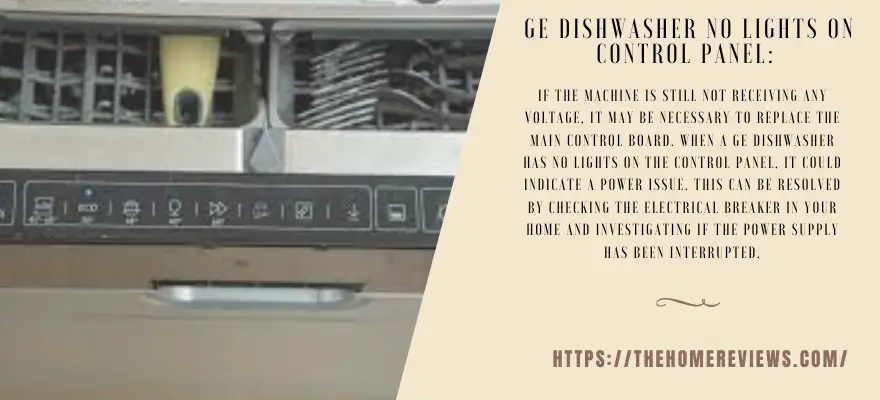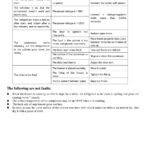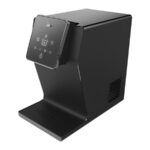If your GE dishwasher has no lights on the control panel, first check the power supply in your home to ensure it hasn’t been interrupted. If the power supply is fine, then check the control voltages.
If the machine is still not receiving any voltage, it may be necessary to replace the main control board. When a GE dishwasher has no lights on the control panel, it could indicate a power issue. This can be resolved by checking the electrical breaker in your home and investigating if the power supply has been interrupted.

If not, check the control voltages. If the dishwasher is still not receiving any voltage, it may be necessary to replace the main control board. We will explore the possible causes and solutions for a GE dishwasher with no lights on the control panel.
Checking the power supply
If your GE dishwasher control panel has no lights, it could be due to a power supply issue. Check your home’s electrical breaker and ensure that the power hasn’t been interrupted. If the problem persists, it may be necessary to replace the main control board.
Inspecting the Electrical Breaker in Your Home:
- Check the electrical breaker in your home to ensure it hasn’t tripped. Look for any switches that are in the “off” position.
- If you find a tripped breaker, flip it back to the “on” position and test if the control panel lights on your GE dishwasher turn on.
Investigating Interruptions in the Power Supply:
- Verify if there are any power outages or interruptions in your area that could be affecting your GE dishwasher.
- If you suspect a power outage, wait for the power to be restored and check if the lights on the control panel come back on.
Implications of a Lack of Power for the Dishwasher:
- If the lights on the control panel of your GE dishwasher remain off even after checking the electrical breaker and power supply, it indicates a lack of power reaching the dishwasher.
- A lack of power can prevent the dishwasher from functioning properly, as it requires electricity to operate various components, including the control panel.
- In such cases, it is recommended to consult a professional technician to diagnose and fix any electrical issues with your GE dishwasher.
Checking Power To Control Board
If you’re experiencing no lights on the control panel of your GE dishwasher, it may be due to a lack of power. Start by checking the electrical breaker in your home to make sure it hasn’t been tripped. If the power supply is intact but there’s still no voltage, you may need to replace the main control board.
Ng power. There are several possible reasons for this issue, but one of the first steps to troubleshoot is to check the power supply to the control board. This step-by-step guide will walk you through the process and help you determine if the lack of power is causing the control board failure and the dishwasher’s lack of lights on the control panel.
Step-by-Step Guide to Evaluating Power Supply to the Control Board:
- Start by turning off the power to the dishwasher. You can usually do this by flipping the circuit breaker switch dedicated to the dishwasher in your home’s electrical panel.
- Once the power is off, locate the dishwasher’s control panel. This panel is typically located on the top front of the dishwasher door.
- Look for any visible signs of damage or loose connections around the control panel. Check if any wires are disconnected or frayed. If you notice any issues, you may need to repair or replace the control panel.
- Next, carefully remove the control panel cover. The method for doing this can vary depending on the dishwasher model, so refer to the user manual if you’re unsure.
- Once the control panel cover is removed, use a multimeter to check for power at the control board. Set the multimeter to the voltage setting recommended by the dishwasher’s manufacturer.
- Place the multimeter probes on the power terminals on the control board. Be cautious and ensure that the probes are making a secure connection with the terminals.
- With the multimeter properly connected, turn the power back on to the dishwasher. If there is power reaching the control board, the multimeter should display a voltage reading.
- If there is no voltage reading on the multimeter, the power supply to the control board may be compromised. This could be due to a faulty power connection, a damaged wire, or a problem with the circuit breaker. You may need to consult an electrician to further diagnose and repair the power supply issue.
Importance of Ensuring Proper Voltage to the Control Board:
- A proper voltage supply to the control board is essential for the dishwasher to function correctly. Without the correct voltage, the control board may fail to power up, resulting in the absence of lights on the control panel.
- The control board is responsible for initiating and controlling various functions of the dishwasher, such as starting the wash cycle, adjusting the water temperature, and controlling the drying process. Insufficient voltage can lead to a control board malfunction and, ultimately, a dishwasher that won’t operate properly.
Signs of control board failure due to lack of power:
- No lights on the control panel: One of the clear indicators of a lack of power to the control board is the absence of lights on the dishwasher’s control panel. If the unit remains unresponsive and displays no lights or signs of functioning, it could be due to a control board failure caused by a lack of power.
- Dishwasher not starting: Lack of power to the control board can prevent the dishwasher from starting altogether. If you press the start button and nothing happens, it’s possible that the control board is not receiving the necessary power to initiate the wash cycle.
- Unresponsive control panel: In addition to the lack of lights on the control panel, a control board failure due to a power issue may result in an unresponsive control panel. You may find that none of the buttons on the control panel are working, even if there is power to the dishwasher.
By following this step-by-step guide and checking the power supply to the control board, you can determine if the lack of power is causing the control board failure and the absence of lights on the GE dishwasher’s control panel. Remember to proceed with caution and consult a professional if needed to ensure your safety and the proper repair of the dishwasher.
User Interface Troubleshooting
If your GE dishwasher control panel has no lights, it could be due to a power issue. Check the electrical breaker in your home and ensure the power supply is uninterrupted. If there is still no voltage, it may be necessary to replace the main control board.
Troubleshooting the user interface can help resolve this issue.
Overview of Accessing the Main Control Panel
- Start by checking the power of your GE dishwasher. Make sure it’s plugged in and the circuit breaker is not tripped.
- To access the main control panel, you will need to remove the outer door panel. Refer to your dishwasher’s manual for specific instructions on how to do this.
- Once the outer door panel is removed, you will see the control panel housing at the top of the dishwasher’s interior.
Step-by-Step Guide to Removing Control Board Housing:
- Begin by disconnecting the dishwasher’s power supply to avoid any electrical accidents.
- Locate and remove the screws that secure the control board housing in place. The number of screws may vary depending on your dishwasher model.
- Carefully pull the control board housing away from the dishwasher’s interior, taking note of any connectors or wiring that may be attached.
Instructions for Removing and Inspecting the Control Board:
- Before handling the control board, discharge any static electricity from your body by touching a metal object.
- Find the control board within the control board housing, and detach any connectors or wiring that might be connected to it. Take a photo or make a note of how the connectors are positioned for easier reinstallation later.
- Remove the control board from its housing by unscrewing any screws holding it in place.
Testing the board:
- Carefully inspect the control board for any visible damage, such as burn spots or loose connections. If you notice any issues, the control board may need to be replaced.
- If there are no visible signs of damage, you can perform a functional test on the control board. This can be done using a multimeter to check for continuity or resistance in different parts of the board. Consult the dishwasher’s manual for specific instructions on how to perform this test.
Led Inspection:
- Take a close look at the LEDs on the control board. If any of them are not lit up or blinking irregularly, it could indicate a problem with the control board.
- In some cases, the LEDs may have burned out completely, which would require the control board to be replaced.
Confirming the Functionality of the Main Control Board
- Once you have completed the previous steps, reassemble the control board housing and reconnect any wiring or connectors.
- Restore power to the dishwasher and check if the control panel lights up and functions properly.
- If the control panel still does not light up or if there are any other issues, it may be necessary to contact a professional technician for further assistance.
Remember, it’s important to exercise caution when working with electrical components. If you are unsure or uncomfortable with any aspect of troubleshooting your GE dishwasher, it’s best to seek professional help to avoid any potential harm or damage.
Removing And Installing Circuit Boards
If your GE dishwasher control panel has no lights, it could indicate a problem with the circuit board. Check the power supply and control voltages first, but if the issue persists, it may be necessary to remove and replace the circuit board.
If you’re experiencing the frustrating situation of having no lights on your GE dishwasher’s control panel, it could be due to an issue with the circuit board. In this guide, we’ll walk you through the process of removing and installing the circuit board step by step.
Follow these instructions carefully to get your dishwasher up and running again.
Step-by-Step Guide to Removing Power Plug Assembly:
- Begin by locating the power plug assembly at the bottom of the dishwasher.
- Disconnect the dishwasher from the power source by unplugging the power cord from the outlet.
- Use a screwdriver to remove the screws securing the power plug assembly in place.
- Carefully detach the power plug assembly from the dishwasher, making sure not to damage any wires.
- Set the power plug assembly aside for later reinstallation.
Instructions for removing the power board assembly:
- The power board assembly is located near the control panel.
- Start by disconnecting any wires connected to the power board assembly. Take note of their positions for future reference.
- Use a screwdriver to remove the screws securing the power board assembly in place.
- Gently pull the power board assembly out of its housing, taking care not to damage any components.
- Set the power board assembly aside for now.
Details on how to remove and install the circuit board:
- Locate the circuit board, which is typically found inside the dishwasher’s control panel.
- Use a screwdriver to remove the screws holding the circuit board in place.
- Carefully detach the circuit board from any wires or connectors.
- Install the new circuit board by aligning it with the screw holes and carefully tightening the screws.
- Reconnect any wires or connectors that were detached earlier, making sure they are securely fastened.
Installing a Grounding Screw:
- Find the grounding screw, which is essential for ensuring proper electrical grounding.
- Use a screwdriver to securely install the grounding screw in the designated location.
Installing the new bracket:
- Position the new bracket in place, aligning it with the screw holes.
- Use a screwdriver to tighten the screws and secure the bracket in place.
Testing the dishwasher and reinstalling components:
- Before reinstalling any components, plug the dishwasher back into the power source.
- Test the dishwasher to ensure that the control panel lights are working properly.
- If the lights are functioning correctly, proceed with reinstalling the power board assembly.
- Reinstall any wires or connectors that were previously disconnected, ensuring they are securely fastened.
- Secure the power board assembly in place using the screws that were removed earlier.
Installing a Plug Cover:
- Place the plug cover over the power plug assembly.
- Ensure that it is properly aligned and fits securely over the assembly.
Reinstalling the Kick Panel:
- Position the kick panel at the bottom of the dishwasher.
- Carefully align it with the screw holes and secure it in place using a screwdriver.
- Ensure that the kick panel is securely fastened and flush with the dishwasher.
By following these step-by-step instructions, you’ll be able to remove and install the circuit board on your GE dishwasher. Remember to exercise caution throughout the process and seek professional assistance if needed. With a functioning circuit board, your dishwasher should be back up and running smoothly.
Frequently Asked Questions
Why Is My Ge Dishwasher Not Turning On? No Lights
If you are experiencing no lights and the dishwasher is not turning on, first check the electrical breaker in your home. If the power supply has not been interrupted, check the control voltages. If the machine still does not receive any voltage, you may need to replace the main control board.
Why Are There No Lights On My Dishwasher?
If there are no lights on your dishwasher, first check the electrical breaker in your home to see if the power supply has been interrupted. If not, check the control voltages. If the machine is still not receiving any voltage, it’s time to replace the main control board.
How Do You Reset the Control Panel on a Ge Dishwasher?
To reset the control panel on a GE dishwasher, locate the kickplate access panel and remove it. Behind the kickplate, you will find two buttons in the bottom left corner. Press the first button to reset the dishwasher.
Why Does My Ge Dishwasher Not Have Any Power?
If your GE dishwasher does not have any power, first check the electrical breaker in your home to see if the power supply has been interrupted. If not, check the control voltages. If the machine is still not receiving any voltage, you may need to replace the main control board.
Why Is My Ge Dishwasher Not Turning On? No Lights
If the light is off, the unit is probably not receiving any power. First, check the electrical breaker in your home and investigate whether the power supply has been interrupted. If not, check the control voltages. If the machine is still not receiving any voltage, it’s time to replace the main control board.
Conclusion
Been interrupted. If the light on the control panel of your GE dishwasher is off, it is a clear sign that the unit is not receiving any power. First, check the electrical breaker in your home and make sure that the power supply has not been interrupted.
If the breaker is functional and the dishwasher is still not receiving any power, it is likely that the main control board needs to be replaced. To reset the control panel on a GE dishwasher, some models have a reset button located behind the kickplate access panel.
Simply remove the access panel and press the reset button to restore the control panel to its default settings. If your GE dishwasher has no lights on the control panel, it is important to first check the power supply and the control voltages.
If these are not the cause of the issue, the main control board may need to be replaced. Following the proper troubleshooting steps, such as checking the electrical breaker and resetting the control panel, can help resolve this problem and get your dishwasher working again.




